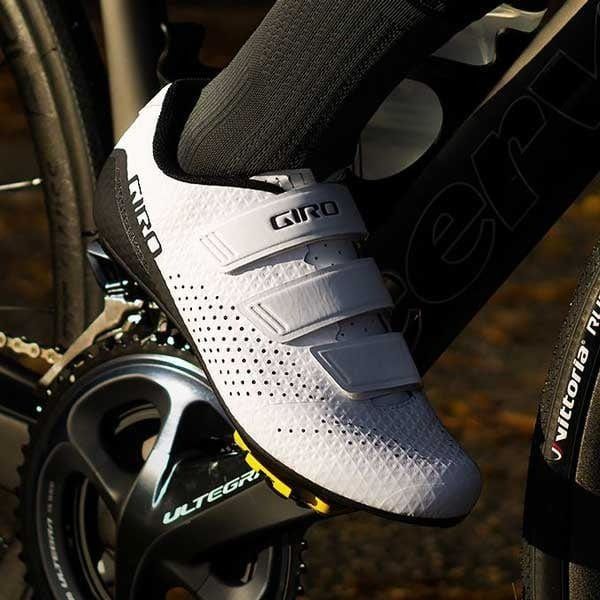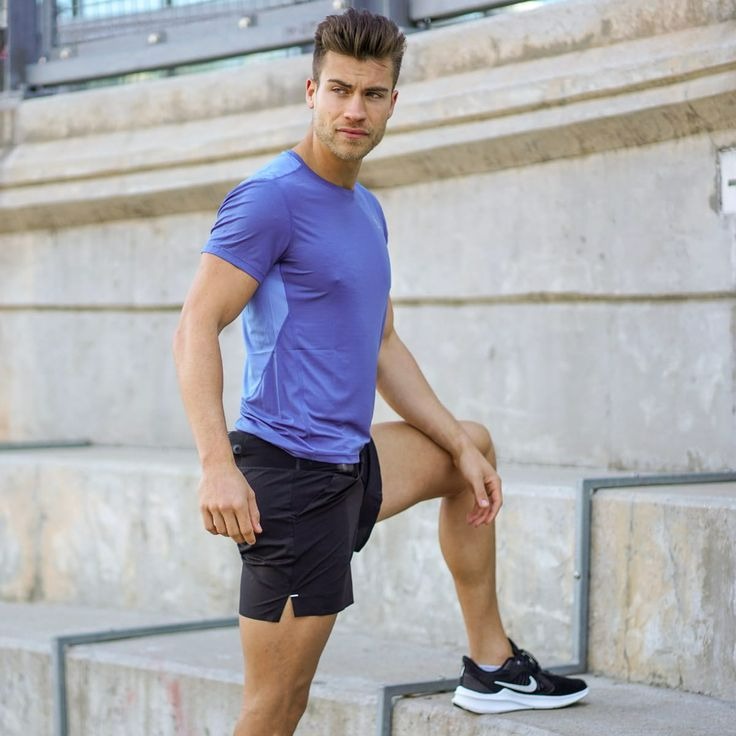The Science Behind Fat Burning and Cycling
To understand how cycling can help in burning belly fat, it’s crucial to know the basics of how our bodies burn fat. When we exercise, our bodies require energy. This energy comes from glycogen, stored in our muscles, and fat stores throughout the body, including the belly. Cycling, an aerobic activity, needs a good supply of oxygen and tends to burn more fat for fuel, making it a great exercise for reducing belly fat.
During a cycling workout, the heart rate increases, and so does the metabolic rate. This means that even after cycling, your body continues to burn calories at a higher rate. It’s known as the afterburn effect or excess post-exercise oxygen consumption (EPOC). The more intense the cycling session, the greater the EPOC effect, leading to more fat being burned even while at rest.
Furthermore, cycling can build muscle, particularly in the lower body. While this might not directly burn belly fat, increased muscle mass boosts metabolism, which in turn can help burn more fat overall, including belly fat. In essence, the combination of calorie burn during exercise, the afterburn effect, and increased muscle mass all contribute to the potency of cycling as a fat-burning activity.
For a fat burning effect, it’s important to cycle at an intensity that’s high enough to challenge the body but still sustainable. This balances burning glycogen and fat and can be engineered through specific cycling routines designed for fat loss. With consistent effort, does cycling burn belly fat becomes less of a question and more of a strategic outcome.

How Cycling Targets Belly Fat
Cycling is an effective way to target belly fat. It engages the stomach muscles as you ride. This kindles the core and promotes fat burn. When cycling, your body taps into fat stores for energy. Belly fat, as a ready energy reserve, is often used.
Cycling’s aerobic nature means it burns calories and fat over time. Regular rides boost metabolism, aiding further in belly fat reduction. High-intensity rides especially target larger fat deposits. They encourage the body to burn visceral fat, which includes belly fat.
To effectively target belly fat, consistency is key. Integrating regular cycling sessions creates a fat-burning rhythm. The body adapts to burn more belly fat as a result. Moreover, cycling combines with a proper diet for a targeted approach. Thus, the question isn’t ‘does cycling burn belly fat,’ but how cycling does so efficiently.
Setting Up a Cycling Routine for Fat Loss
To maximize belly fat loss through cycling, a well-structured routine is crucial. Start by setting clear, achievable goals. How much belly fat do you want to reduce? By when? Tailor your cycling sessions around these goals. For beginners, aim for moderate-intensity cycling 3-4 times a week. Each session should last about 30-45 minutes.
Incorporate variety into your routine. Mix long rides at a steady pace with short, high-intensity sessions. This diversity can prevent boredom and plateaus in progress. Utilize cycling apps or join cycling groups for guided sessions that focus on fat loss. These often offer structured programs that vary in intensity and duration to suit different fitness levels.
Keep track of your cycling routine. Use a diary or an app to log your rides, including duration, intensity, and how you felt. This will help you see your progress and make necessary adjustments to keep challenging your body.
Do not forget to listen to your body. Rest and recovery are just as important as the exercise itself. Allow for rest days to avoid burnout and overtraining, which can lead to injuries. A balanced approach ensures that does cycling burn belly fat isn’t just a possibility but a reality achieved through consistent and dedicated effort.

Interval Training: The Key to Boosting Fat Burn
Interval training is a pivotal element in the fat-burning puzzle. This type of workout alternates between high bursts of activity and fixed periods of less-intense recovery or complete rest. When it comes to cycling, interval training can ramp up the ‘does cycling burn belly fat’ query into a fat-torching yes. Here’s why and how interval training works to maximize fat loss:
- Increases Metabolic Rate: Short, intense bursts demand more energy, thus increasing your metabolic rate. A higher metabolism burns more calories, including after your workout.
- Maximizes Calorie Burn: During the high-intensity phases, your body burns more calories in a shorter time compared to a steady-state ride.
- Aids in Fat Oxidation: Intervals can help your body become more efficient at burning fat as fuel during the recovery phases.
- Enhances EPOC: The intense exertion causes your body to consume more oxygen post-workout, leading to continued calorie burn, known as the afterburn effect.
- Preserves Muscle Mass: Unlike prolonged steady-state cardio, which risks muscle loss, intervals help maintain, even build, muscle which in turn promotes fat burn.
Integrating interval training into your routine is simple. You can start with a common pattern such as cycling as fast as you can for 1 minute, then cycling at a relaxed pace for 2 minutes. Repeat this cycle for the duration of your workout. As your fitness improves, you can play with the duration and intensity of the intervals. Always warm-up before starting intervals and cool down afterward.
Remember, consistency is key, and pairing interval training with steady rides can offer the best results for belly fat reduction. Combining this with a sound diet strategy amplifies the impact, ensuring that ‘does cycling burn belly fat’ yields a robust, affirmative response.
Diet and Nutrition: Fuelling Your Ride to Lose Weight
Nutrition is critical in any weight loss plan, including when cycling to burn belly fat. What you eat before, during, and after your rides can significantly affect your performance and the amount of fat you burn. Here are some key dietary strategies to enhance your cycling routine for maximal belly fat reduction:
- Eat Balanced Meals: Focus on a diet rich in whole foods like vegetables, fruits, lean proteins, and whole grains. This ensures your body gets the right mix of nutrients to fuel your rides.
- Control Portion Sizes: Eating too much can negate the calorie deficit created by cycling. Use smaller plates and track your portions to avoid overeating.
- Stay Hydrated: Water is essential for metabolism and helps you ride at your best. Drink water regularly, more so before and after your cycling sessions.
- Time Your Meals Right: Consuming a meal or snack high in carbs an hour or two before cycling can give you the energy you need. Post-ride, opt for protein to aid muscle recovery.
- Limit Sugary Foods: Foods high in sugar can lead to energy crashes and hinder fat loss. Choose complex carbs over simple sugars for sustained energy.
- Include Healthy Fats: Fats are dense in calories but necessary for long rides. Include sources like avocados, nuts, and olive oil in moderation.
Adjusting your diet and ensuring you’re eating healthily plays a vital role in supporting your cycling routine. Combining the two effectively will make ‘does cycling burn belly fat’ an undeniable truth for your fitness journey.
Measuring Progress: Tracking Your Belly Fat Reduction
Measuring your progress is vital when working towards belly fat reduction through cycling. It’s not just about feeling the change; tracking provides quantifiable evidence that your efforts are paying off. Here are practical ways to track your belly fat reduction:
- Use a Tape Measure: Regularly measure your waist circumference. It’s a direct way to see if you’re losing belly fat.
- Weigh Yourself: Keep an eye on your overall weight. Weigh yourself at the same time each day for consistency.
- Body Fat Scales: Some scales measure body fat percentage. They can reflect changes not shown on a regular scale.
- Clothing Fit: Notice how your clothes fit. If they’re getting looser around your midsection, it’s a good sign.
- Take Photos: Visual documentation of your progress can be very motivating. Take photos from the same angles periodically.
- Fitness Apps: Use apps to track your cycling progress, including distance and calories burned.
Consistency in tracking is as vital as the cycling itself. Update your measurements weekly or biweekly to watch your belly fat melt away. Remember, muscle weighs more than fat, so if weight loss stalls but you’re feeling fitter and your clothes are looser, you are still on the right path. Stay patient and persistent, and eventually, the numbers will confirm your hard work, making the answering ‘does cycling burn belly fat’ a resounding ‘yes’ reflected in your data.
Common Misconceptions About Cycling and Weight Loss
While cycling is an excellent tool for reducing belly fat, there are several misconceptions that can lead to confusion. Let’s debunk some of these myths to clarify the role of cycling in weight loss.
- Cycling Only Affects Leg Muscles: Many believe cycling only works the legs. In reality, it also engages the core and upper body, aiding in overall fat loss.
- No Need for Diet Control: Some think that cycling alone suffices. Without a healthy diet, cycling may not be effective for fat loss.
- Spot Reduction Works: There’s a myth that you can target belly fat specifically with cycling. Fat loss occurs throughout the body, not in just one area.
- Cycling Can’t Burn Much Fat: On the contrary, consistent and intense cycling can burn a significant amount of fat, including belly fat.
- Intervals Are Only for Advanced Riders: Interval training is beneficial for all levels. It escalates fat burning, regardless of experience.
- More Cycling Equals More Fat Loss: Overtraining can harm your body. Balance is key for sustainable fat loss.
Understanding the truth behind these misconceptions helps in approaching weight loss through cycling in a more informed and effective manner. Remember, combining cycling with a good diet and rest leads to the best results.
The Additional Health Benefits of Cycling Beyond Fat Loss
Cycling offers more than just a way to lose belly fat. It has a wealth of additional health benefits that can improve overall wellness. Here are some notable advantages of cycling regularly:
- Improves Cardiovascular Health: Regular cycling boosts heart health, reducing risks of heart disease and stroke.
- Enhances Lung Capacity: As an aerobic exercise, it increases lung function and efficiency.
- Lowers Stress Levels: Cycling can decrease stress and promote mental well-being due to endorphin release.
- Boosts Immune System: This physical activity can fortify the immune system, helping to fend off illnesses.
- Increases Joint Mobility: It’s a low-impact exercise that enhances flexibility and joint mobility.
- Builds Strength and Tone: Regular pedaling strengthens the legs, hips, and glutes, while toning muscles.
- Supports Posture and Coordination: Navigating a bike requires balance, which can improve overall coordination and posture.
- Promotes Weight Maintenance: After belly fat loss, it helps to maintain a healthy weight long-term.
These benefits showcase that cycling can enhance not just the question of ‘does cycling burn belly fat,’ but it also amplifies quality of life in many other areas.


